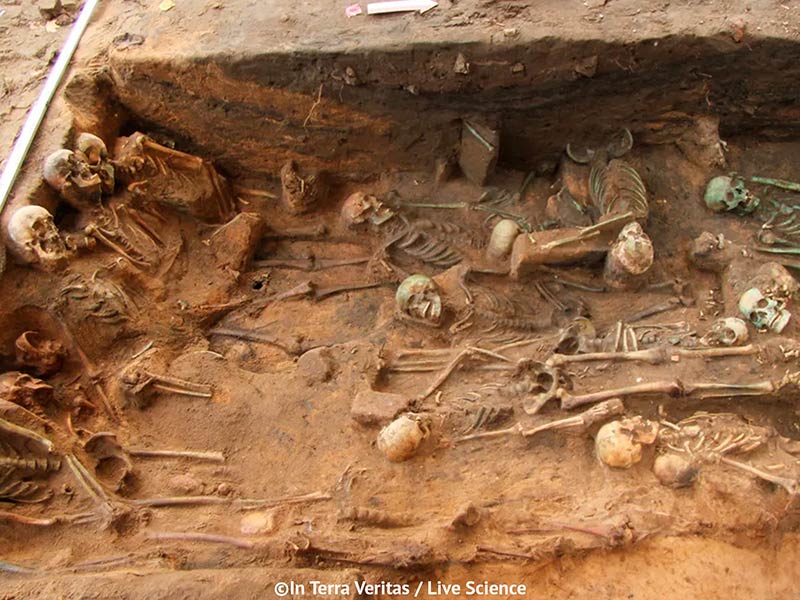Nuremberg (Germany). Discovered during a survey on a construction site in the center of Nuremberg last February, the 6,000 m2 mass grave is made up of eight wells, each containing “several hundred bodies”, according to the city's Heritage Conservation department and the archaeologists in charge of the excavations. According to their first estimates, the total number of remains could be around 1,500, or even 2,000. No other site excavated in Europe to date has yielded so many human bones.
Surprised by this discovery on a plot where they thought they would find remains dating from the Thirty Years' War, the archaeologists first thought of a site from the Second World War: Nuremberg suffered numerous aerial bombardments between 1943 and 1945 which caused hundreds of civilian casualties. The site also bears traces of these bombings since one of the wells was partially destroyed. Another hypothesis, that of the victims of a plague epidemic, was confirmed after carbon-14 dating and the examination of the ceramic shards present nearby. The genome of the plague bacillus remains to be confirmed by bacteriological analyses.
The plague produced several epidemic waves in Europe from the 14th century, particularly in Germany in the 17th century. In Nuremberg, carbon 14 gives an interval between the end of the 15th century and the end of the 17th century. The dating could be refined thanks to coins found in the first wells excavated. Archaeologists therefore estimate the creation of the mass grave at 1632 and 1633, the period of a plague epidemic in Nuremberg which caused several thousand victims. Historians estimate the number of 30,000 deaths from the plague in the city in the 16th and 17th centuries. The epidemic of 1632 is attested in a document from 1634 which indicates that “several hundred bodies were buried” near the site.
Although medieval cemeteries were used for several centuries, plague epidemics quickly saturated these urban cemeteries and the remains were buried in mass graves. Archaeologists clarify that Nuremberg bodies were not buried “according to Christian funeral rites” given the urgency of the situation. In Europe, it was in fact customary to bury Christians on their backs with their heads positioned to the west and their feet to the east, while in the wells of the site the remains are placed more or less seated, tight against each other. Skeletons of infants and children were also found among those of adults.
The next stages of the excavations will focus on the last wells on the site and on demographic studies. Anthropologists hope to determine“the age and state of health of the victims” as well as their diet. By extrapolation, they will be able to draw a portrait of the population of Nuremberg in the 17th century, since the plague killed children as well as adults, in all social classes.







